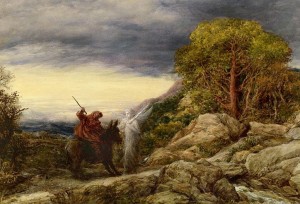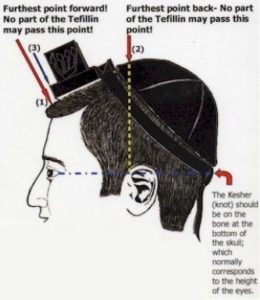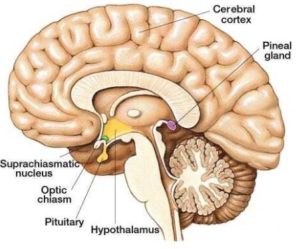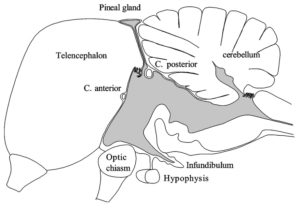This Monday evening is Lag b’Omer, the 33rd day in the Omer count and traditionally commemorated as the yahrzeit of the 2nd-century CE sage and mystic Rabbi Shimon bar Yochai. Aside from being one of the most-cited voices in the Mishnah and Talmud, Rabbi Shimon (“Rashbi”) is even more famous for being the protagonist of the Zohar, the “textbook” of Jewish mysticism. Although he himself did not write it, the Zohar is based on his life and teachings, and is drawn from a collection of manuscripts initially produced by his disciples.
The timing of Lag b’Omer is even more significant because it is also the date when the “plague” upon the students of Rabbi Akiva ceased. After the deaths of some 24,000, only five of his students survived to rebuild Judaism—Rashbi being one of them. We must remember that Rabbi Akiva himself was jailed during this time, and eventually executed. It is during Rabbi Akiva’s time imprisoned that the Talmud (Pesachim 112a) relates an incredible story of when his student Rashbi came for a visit:
Rabbi Shimon approached his teacher behind bars and said lamdeni Torah, “teach me Torah!” Rabbi Akiva refused, since the Romans had banned Torah study—that was the reason Rabbi Akiva was imprisoned in the first place—and he did not want to get Rashbi in trouble, too. Incredibly, Rashbi responded by threatening Rabbi Akiva: “If you will not teach me, I will tell Yochai my father, and he will deliver you to the government!” This is puzzling, since Rabbi Akiva was already in jail at this point, so it seems like Rashbi was threatening to have Rabbi Akiva executed! We learn from this (among other places) that Rashbi’s father Yochai was a wealthy and influential figure in the Roman government, and could make such an order. This actually helps to explain why Rashbi later had to go into hiding from the Romans and spent over a dozen years in a cave, simply for criticizing the Roman regime. Certainly, many simple Jews (and gentiles) at the time would have criticized the Roman authorities without having to fear for their lives. Rashbi probably needed to go into hiding for what he said because his father was involved with the Roman government. He was well-connected and potentially a political threat to the authorities.
Rabbi Akiva told Rashbi: “My son, more than the calf wishes to suck, the cow wants to suckle!” In other words, Rabbi Akiva really did want to teach Torah, of course, even more than Rashbi wanted to learn, but he did not want to put his student in danger. Rashbi countered by arguing: “But who is the one in danger? The calf!” It is the baby that is in a fragile state, and needs the mother more than the mother needs the child. Rashbi was saying he needed Torah like a calf needs milk, otherwise he is (spiritually) in trouble anyway. Rabbi Akiva relented and relayed five final teachings, though they were terse and cryptic.
The first, appropriately, was “If you wish to hang yourself, do so on a big tree.” Since what Rashbi was asking of Rabbi Akiva potentially carried a death sentence, Rabbi Akiva gave him a teaching directly related to that. The simple meaning is that if Rashbi is going to be executed al kiddush Hashem, as a martyr sanctifying God’s Name, he should do so on a “big tree”, meaning to make it public so that the Kiddush Hashem is that much greater and inspires others to strengthen their resolve. Of course, Rabbi Akiva himself would soon be executed in such a way, with a huge Kiddush Hashem of his own.
[It should be noted that Rashi (not Rashbi) interpreted this first teaching metaphorically to mean that if you cite a Torah teaching, do so by citing it in the name of a great earlier sage, the “big tree”. The Ben Ish Chai, meanwhile, comments mystically that the “big tree”, ilan gadol, is the mystical Tree of Life, the ilan hakadosh, of the Sefirot. More specifically, ilan (אילן) has a value of 91, which is a clear allusion to the special Octagrammaton, explained here.]

The Octagrammaton, the eight-letter Name of God that fuses Hashem with Adonai
Rabbi Akiva’s second teaching was: “When you teach your son, teach him from a corrected scroll.” This teaching was also highly prescient, since Rashbi would soon have to go into hiding with his son, Rabbi Elazar. The two spent all of their time in the cave learning. From elsewhere in the Talmud (Ketubot 19b) we learn that a “corrected scroll”, sefer mugah, is any scroll or book of Tanakh that has been carefully proofread to make sure there are no errors. If an error is found, one has up to thirty days to correct it. Based on this, the Talmud explains the meaning of Rabbi Akiva’s second teaching is that a child should be taught properly from the beginning, because if they learn something erroneous in childhood, it will be hard to correct later.
The third teaching of Rabbi Akiva was: “Do not cook in your fellow’s pot.” The Talmud explains that this means a person should preferably not marry a divorcee whose husband is still alive, for she will likely still be thinking of her first love (whether positively or negatively). The Talmud cites a parallel teaching that when two divorced people marry each other, there are “four minds in their bed”. Each one brings the baggage of their previous relationship!
We’ll skip ahead to the fifth teaching as it is related to the third one: Rabbi Akiva teaches that a man should get married (and stay married!) and this is a mitzvah v’guf tahor, both a great mitzvah in itself, and also makes a man’s body pure, since he will not be drawn to sexual sins (having a wife to take care of those urges), and will have children to keep him busy and make him more responsible. It’s no coincidence that Rabbi Akiva saves this for his final teaching, since he himself was lucky to marry the right woman, who encouraged and supported him, and whom he later credited for all of his Torah learning and success.
These two short teachings on marriage actually carry a great deal of hidden mystical meaning (as, for instance, the Ben Ish Chai comments and explains in his Ben Yehoyada). Rashbi would go on to teach the fundamentals of Jewish mysticism in the Zohar, where marital intimacy is the central theme and metaphor that runs throughout the text. In fact, much of Kabbalah in general is based on the dynamics of a marriage as a metaphor for greater cosmic spiritual realities.
Finally, the fourth teaching of Rabbi Akiva is regarding a case where a person rents out a field to their fellow, who will work the land. Instead of taking monetary payment, the renter takes a portion of the produce of the field. This is both a mitzvah to help your fellow, who gets land to work and does not have to pay rent (just a portion of his yields), and is good for the renter’s own wellbeing, since he will eat fresh fruits and be healthy. Thus, it is a mitzvah v’guf gadol—both a big mitzvah and gives one a great, healthy body. Like the other teachings, this one was relevant to Rashbi since, as we’ve seen, Rashbi came from a powerful and wealthy family. He had the means to rent out fields to less privileged people.
As an important aside, there is a famous Talmudic debate between Rashbi and Rabbi Ishmael regarding whether a man should spend all of his time learning Torah, or get a job and make his own living, while also making time to learn Torah (Berakhot 35b). Rabbi Ishmael argued that, although the Tanakh tells us to meditate upon the Torah day and night, and that “it should not depart from your mouth” (Joshua 1:8), we also recite every day in the Shema that “you shall gather in your grain…” (Deuteronomy 11:14), meaning a person needs to work, too! Rashbi countered that if a person works, they will not have enough time to study Torah, as they will always be busy with something; plowing, sowing, harvesting, threshing, and so on. Rashbi argued that if a person fulfils God’s will, then God will bless them with riches, allowing them to outsource the work to others. He therefore concluded that ideally a person should learn all day, and leave the physical work for others. Of course, it was easy for Rashbi to say this since he came from a super-wealthy family, and was able to hire people to do that work!
Ultimately, the debate in the Talmud is settled by Abaye who said: “Many have acted in accordance with Rabbi Ishmael and were successful [in their Torah study. And many] have acted in accordance with Rabbi Shimon ben Yochai and were not successful!” Oftentimes, it is those who balance Torah with labour that become the greatest scholars, while those who are full-time learners fail to achieve Torah greatness. Note as well that Abaye specifically referred to Rashbi as, not just “Rabbi Shimon” (as he did Rabbi Ishmael, without a patronym), but “Rabbi Shimon ben Yochai”, emphasizing that he was the son of the wealthy Yochai, and most people are not so privileged like him.
Today, Rashbi’s position is still taken as support for certain kollels and for those who “make Torah-learning their profession”. However, it is important to clarify here that Rashbi never supported learning Torah at someone else’s expense. Rashbi was very wealthy himself, and could afford to hire others to do his work, while he learned all day. He certainly would not have supported the idea of making a living through learning Torah, for the Talmud clearly states in many places (including several times in Pirkei Avot 1:13, 2:2, 4:5) that this is unacceptable. The Torah should not be used as a “shovel to dig with”, to derive personal or material benefit. And when Rashbi had to go into hiding and did not have his father’s wealth and estate to support him, he lived meagrely on nothing but carobs and water. In either case, he never relied on the funds of others to make a living.
Going back to Rabbi Akiva, it appears that this encounter with Rashbi was his last, and he was soon executed. His final five teachings were concise, but deeply meaningful, especially for Rashbi himself. Rashbi would go on to be one of the five who rebuilt Judaism. His own final discourse, the Idra Zuta, contained deeply profound teachings as well. For an exploration of the last passage in the Idra Zuta, see the following short class:
Happy Lag b’Omer!





